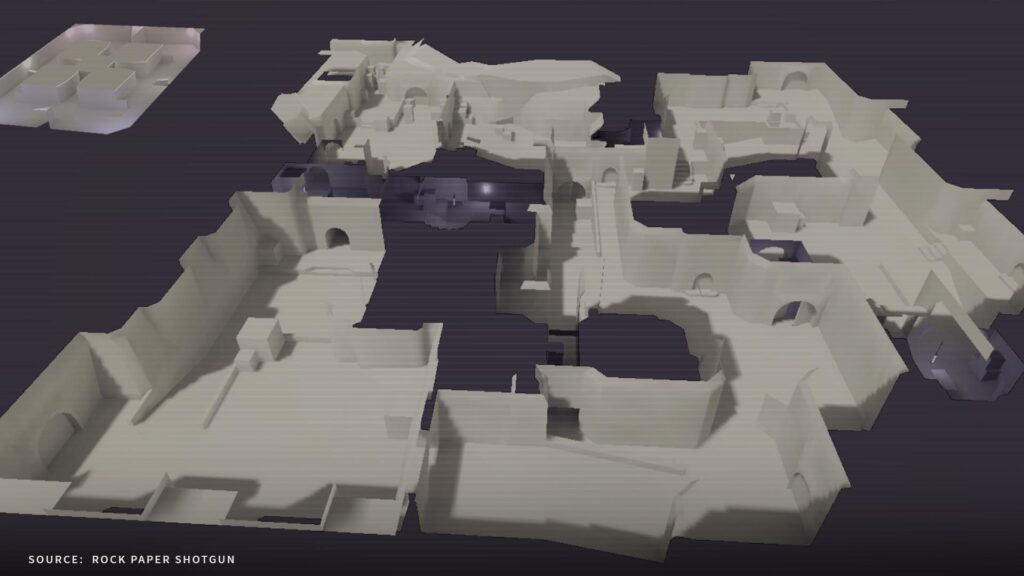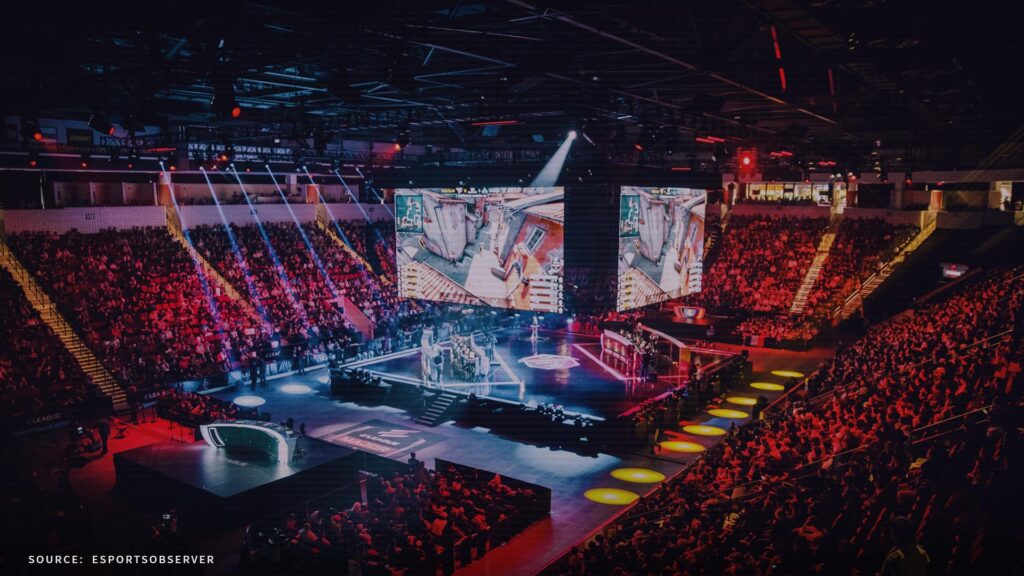Welcome (back) to part four of our retrospective view on how important games in video game history influenced the server hosting industry. This text, just like the last one, focuses on how the addition of user generated content, often referred to as mods or modifications, extends the lifespan of a video game.
Even years after the initial release, games with active modding communities tend to not only top the score charts of recent player numbers, but manage to ignite new spikes of interest as seen with the release of DayZ and Arma 2. Before we venture further down memory lane, this time turning the spotlight on Half Life and the infamous fps phenomenon Counter-Strike, let’s just briefly remind ourselves why we think these information are of mutual interest and value for game developers and hosters alike.
Oftentimes, private servers are the only place and space where players can fully customize their games to their own liking. We as GPORTAL sincerely believe that enabling user created content in your game is like tapping into a space of unused and unpredictable potential in terms of product longevity and community bonding. Despite the hardships of implementing a robust, moddable system as mentioned in our previous article, we’ll always advocate for an open minded development cycle that incorporates user generated content right from the beginning.

When people hear modifications, they often think about sandbox or survival adventures, but have you ever seen Thomas the Locomotive appear in Resident Evil? Some would argue that the sight of Thomas in a dark room is more terrifying than any genetically manipulated monster, but this is very much off-topic. I just wanted to point out that players, if handed the right tools, will always care about your game and even if you don’t find the additions useful, it will spark interest and content on any kind of media.
Moving on with the main protagonist of our story, who started as a mod of a well-known and genre-defining game. Of course, we’re speaking about Half-Life. Gordon Freeman set things in motion that can be tracked down to this day. However, the most important aspects for us are how this game came to life and why it was able to have such an impact.
When Valve was founded with the desire to create something incredibly ambitious, the newly found company didn’t want to start from scratch but rather rely on an engine that had already proven to be working perfectly. So, after visiting Id software, they decided to go with a modified version of the Quake engine.


The GoldSource engine was born and went on to power Valve’s storydriven, first person shooter Half-Life. Like Quake, Half-Life was meant to be heavily modded. It didn’t take long until modding enthusiasts came up with all sorts of game modes and maps but there was one particular mod that would get even Valve’s attention.
It took Minh Le and Jess Cliffe about 1,5 months to create a mod which included a map that would still look rather different compared to modern 5vs5 scenarios. The only game mode available was hostages, in which you literally had to overcome a group of terrorists to save a fixed number of scientists taken hostage.
Even though this was rather simple, the newly added gameplay mechanics, the fact that weapons had to be bought and things like medi-kits were absent, made up for a very engaging and unique gaming experience.
Player numbers kept rising by the day and it wasn’t long before Valve noticed this as well. They bought the intellectual property but kept the original modders on board, listened to community feedback and laid the groundwork for one of the most successful games to come.


The game’s popularity spread through word of mouth as well as forum activity and by the time the first official release was launched in November 2000, simply called “Counter-Strike”, the game had already become a hit.
Imagine the impact it had on servers and options like fastpath. As mentioned in the article about GPORTAL’s history, fastpath basically became a must-have for all those who took online multiplayer seriously and, while Counter-Strike, on the other hand, became a must-have and staple for every hoster.
Everybody wanted to go online and play a couple of rounds. Keep in mind how expensive it was to stay online back then, even if it only was for one hour a day. This didn’t stop those who wanted to join the ranks of the aspiring and semi-famous eSports-teams, which were primarily formed in Europe and North America. Counter-Strike established itself as a title that could be just as thrilling to watch as was playing the game itself.
Developers and modders brought the game to new heights with every iteration, adding new maps, weapons and modes until it became clear which format would be best for tournaments. There were some hiccups in the community and overall reception as Counter-Strike went from the well received CS 1.6 to Counter-Strike: Condition Zero.

Condition Zero took more development time than expected and arrived in an already outdated state. Given the nature of Counter-Strike being a competitive online multiplayer shooter, it came to no surprise that the added single player campaign was not received well and was largely ignored and quickly forgotten.
Next up was Counter-Strike: Source, Valve’s first game released with their new Source Engine. Source originated from GoldSource but was, in big parts, a new engine and planned to be upgradeable whenever technological standards advanced significantly. To this day, there is a split in some parts of the Counter-Strike community.
Many regarded CS 1.6 as the better game that offered a much higher skill ceiling albeit with worse graphics and an outdated engine. Players who were accustomed to the nooks and crannies of CS 1.6, even pro players, found it difficult to get used to Counter-Strike: Source, or CSS in short. Over time though, CSS accumulated more and more players.
Reasons for this are numerous but some stand out significantly. Updated graphics and a new physics engine made the game more enjoyable, especially for newer players. It came out in 2004, right when Steam became more and more important for many gamers. CSS was mostly played on Valve’s gaming platform and also benefited from regular updates.


New weapon and map additions kept players more engaged and in a very smart move Valve made sure that CSS was included into a package with the highly anticipated Half-Life 2. Last but not least, it came down to the eSports community. Leagues and lucrative tournaments formed around CSS which eventually lead to declining interest for CS 1.6 events.
Even with CS 1.6, a couple of top teams and players were able to get a sponsorship from different companies but the snowball effect due to bigger tournaments, audiences and teams involved gathered more attention in the outside world. Companies realized that there was a whole new crowd of people standing ready for new marketing opportunities.
Big events like the Electronic Sports World Cup and the World Cyber Games attracted an even bigger audience and gave CSS the traction it needed to gather interest on a whole new global scale.
Fast forward to the next iteration of Counter-Strike, Counter-Strike: Global Offensive. Released in 2012, it more or less repeated the story of CS 1.6 and CSS, as it garnered the attention of more players by the day with improved gameplay, enhanced graphics, a growing competitive scene and a passionate community.


Valve went all in on eSports and made CS:GO one of the biggest and best known competitive titles around the globe and started hosting tournaments like the annual CS:GO Major Championship. Additions like new weapons and even skins kept the franchise fresh and alive throughout the years.
After over 20 years of competitive online gaming, there is still no end in sight and the daily player numbers on Steam charts only nod in agreement. It is amazing to retrospect and think about how this journey has started.
A single mod turned Half Life into this online multiplayer powerhouse. Half Life is a masterpiece on its own but it wasn’t without the involvement of two students that a franchise, which now spans over two decades, was born overnight. Of course, this may have been a “lucky shot” and might be hard to reproduce.
But then again, think about games like Dota, DayZ, PUBG. The list goes on and will most likely only grow with future releases. Allowing people to modify your game, creating their own assets and game modes, might seem more tempting after reading my short exposé about the rise of Counter-Strike – and rightfully so.

We at GPORTAL never shy away from pointing out that modifications and dedicated servers are your best way of ensuring that a game, roughly speaking, never dies. Counter-Strike is the perfect example of what can happen if a unique idea collides with a great game, resulting in something even Valve likely never anticipated.
Around the time the original Counter-Strike gained popularity, a file sharing service called Napster rose to popularity in 1999. With it came a network architecture that is going to become very attractive for developers and publishers alike as it comes with minor costs involved. I’m of course referring to Peer to Peer.
As Peer to Peer and dedicated servers share some similarities but are overall vastly different, we’ll focus on the history and rise of Peer to Peer in online gaming in our next article. You can expect a fair share of advantages and disadvantages that should explain why, to this day, Peer to Peer is used in so many different video games.

















